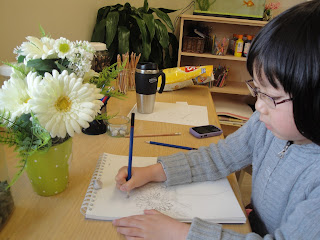Teachers often ask for ways to document children's experiences, a method that isn't too complicated and doesn't take days to produce.
Is there a right way to get the work done?
Is there a right way to get the work done?
The truth is there is no right way or wrong way and each teacher must find her own process.
However I can offer these two handy words; describe and interpret.
Begin by describing what is happening in the experience using both words, pictures and video.
Consider these terms;
explain, illustrate, portray, depict and tell.
Next consider what the child may have been thinking during the experience. With older children this is sometimes evident in conversation.
With younger ones you may be making some assumptions.
Consider these terms;
explain, illustrate, portray, depict and tell.
Next consider what the child may have been thinking during the experience. With older children this is sometimes evident in conversation.
With younger ones you may be making some assumptions.
Once you have done this, take the information and attach it to a learning objective, or developmental milestone.
Remember that posting documentation validates the children's contribution to the classroom. It lends a voice to their shared experiences and life at school.
Even if you can't find an objective or milestone, trust me learning is always happening.
In the end try not to be overly stressed by the need to produce university grade documents that many times no one reads except you and your colleagues.
Unlike daycare where parents come into classrooms daily, schools only have a few parent nights a year.
So who is reading all that documentation?
However, the power of documentation cannot be overlooked. It is a point of reflection and provides educators with the next steps in supporting children's learning and thinking as well as being an excellent method to track children's development.
Happy trails....
Remember that posting documentation validates the children's contribution to the classroom. It lends a voice to their shared experiences and life at school.
Even if you can't find an objective or milestone, trust me learning is always happening.
In the end try not to be overly stressed by the need to produce university grade documents that many times no one reads except you and your colleagues.
Unlike daycare where parents come into classrooms daily, schools only have a few parent nights a year.
So who is reading all that documentation?
However, the power of documentation cannot be overlooked. It is a point of reflection and provides educators with the next steps in supporting children's learning and thinking as well as being an excellent method to track children's development.
Happy trails....









































